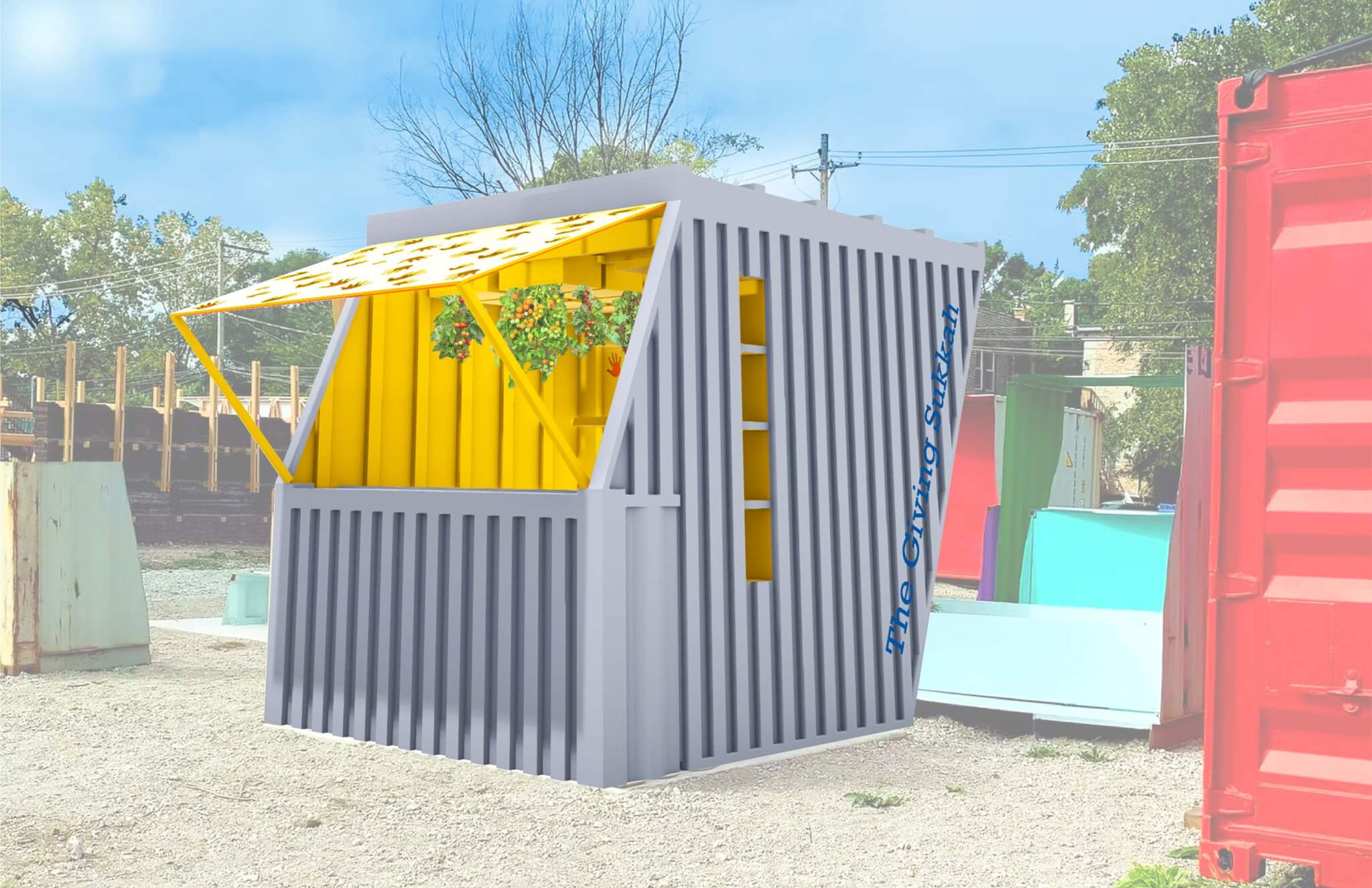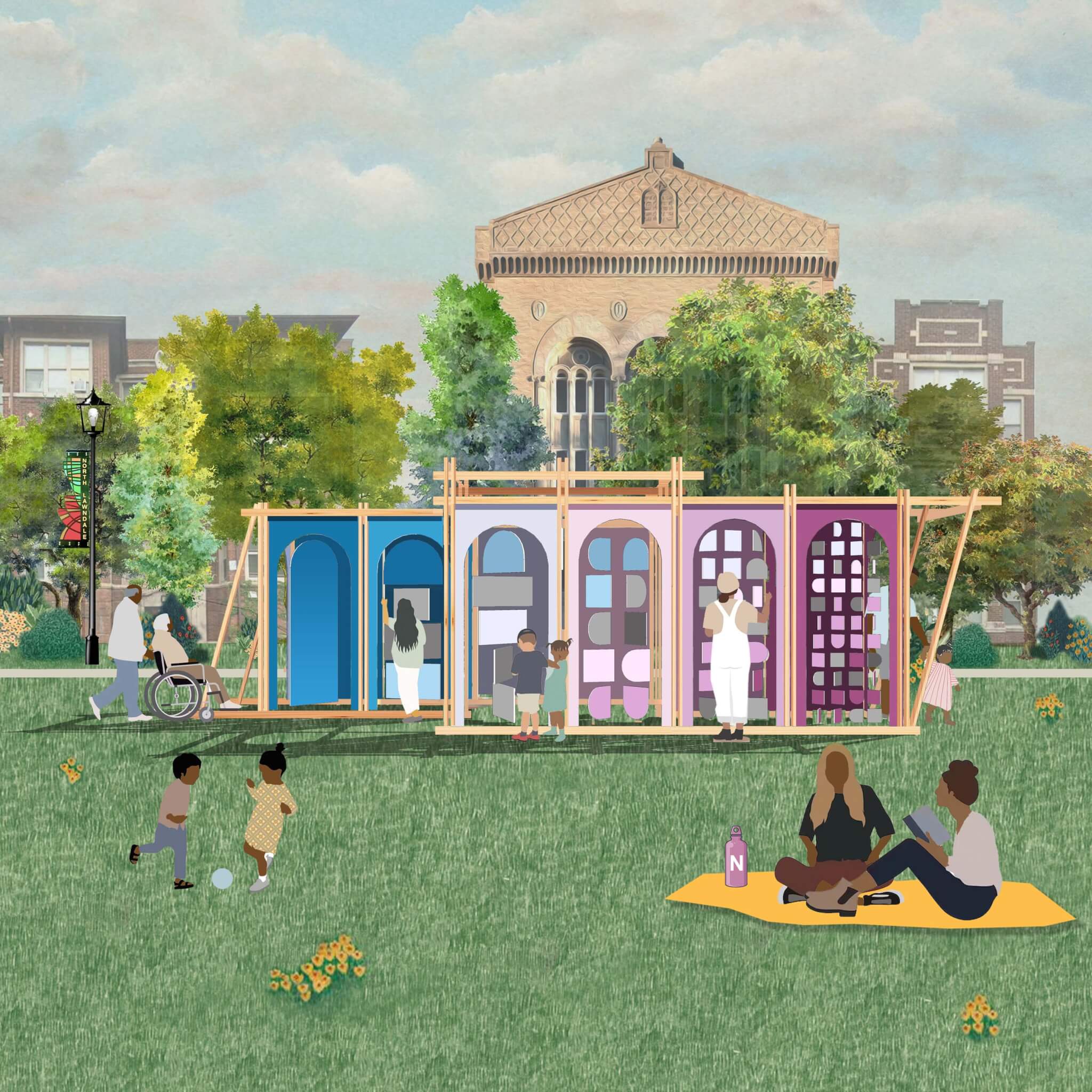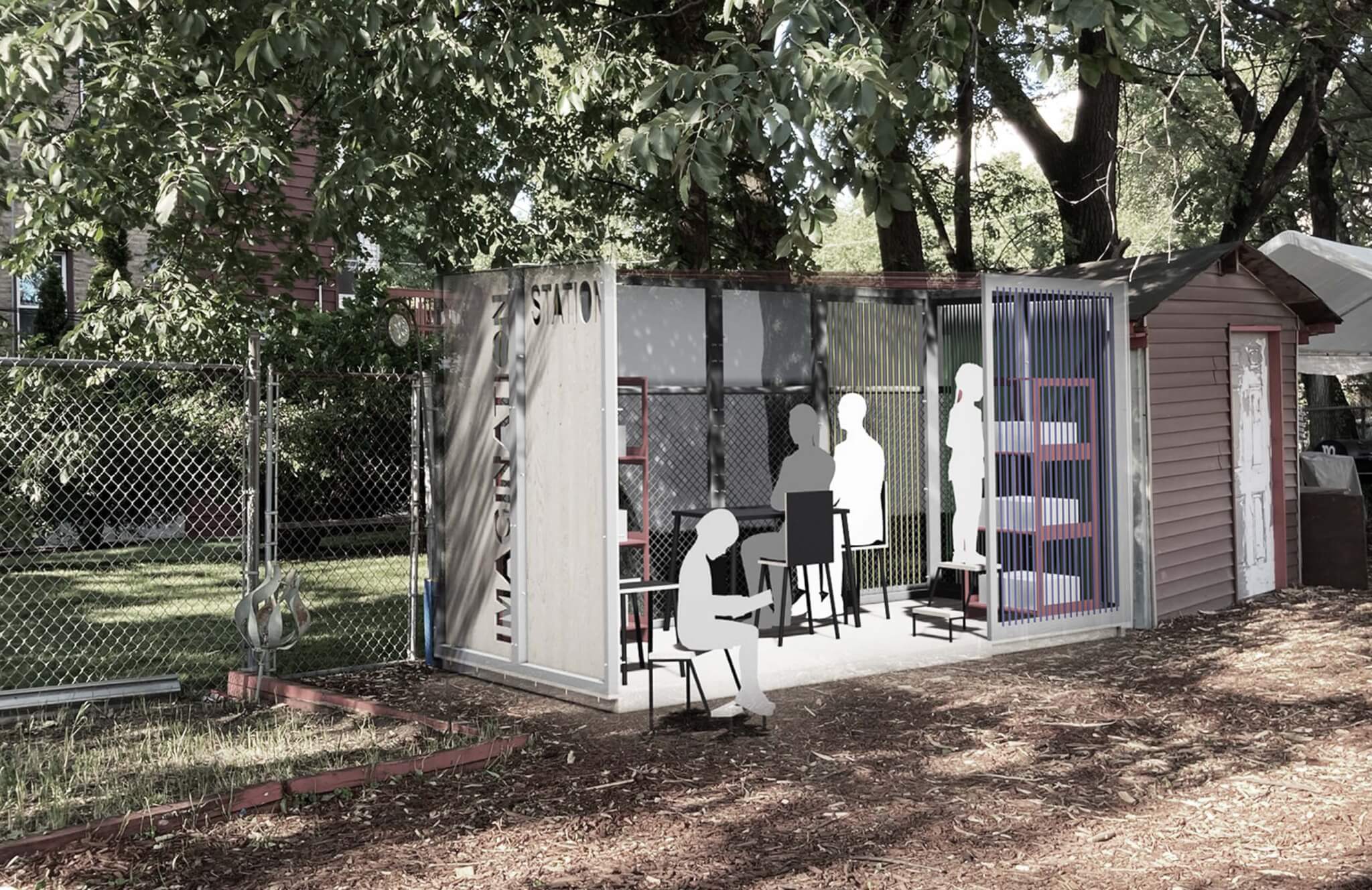Sukkahs, temporary, outdoor, ad hoc structures built during the Jewish holiday Sukkot are the subject of the first annual Chicago Sukkah Design Festival happening October 9–16 in the South Side neighborhood of North Lawndale. Sukkot, an annual, week-long holiday, celebrates the yearly harvest by congregating with friends and family over shared meals. The festival aims to combine social justice with cultural legacy through design.
Conceived by Joseph Altshuler and Zack Morrison of Could Be Architecture and co-hosted by the Lawndale Pop Spot, Chicago Sukkah Design Festival draws upon this communal history by pairing local architecture firms with community organizers to design and build small structures that provide a neighborhood service. The festival will debut the sukkahs and includes week-long programming at the intersection of West Douglass Blvd and Millard Ave. Events include an interfaith dinner, a film screening from Tonika Johnson’s Folded Map Project, a community clean-up, and architectural round table discussion.

The site was chosen for its diverse history and cultural legacy. A primarily Jewish neighborhood until the 1960’s, North Lawndale has since faced significant divestment and transitioned to a majority Black population. One of the goals of the festival is to build solidarity between Jewish organizations that may no longer be hosted in the neighborhood and local community groups that are actively improving current conditions. To that end, the designers chosen to participate in the festival are paired with non-profit social service organizations to help determine the long-term, much-needed programming of the sukkahs.
“A primary goal of creating the Chicago Sukkah Design Festival was not just making a fun design exhibition,” Altshuler told AN, “but building relationships and initiating partnerships between designers and organizations, and to think about how a sukkah isn’t just a pavilion for celebrating a week-long holiday in the fall but can actually become the idea of ad-hoc structures performing in a more semi-permanent way.”
Human Scale, New Office, and Chicago Design Office are each partnering with Young Mens Educational Network, Stone Temple Church, Men Making a Difference, and Open Books – North Lawndale Reads, with resulting plans that include a farmer’s market, micro-musuem, and free library. The sukkahs will be constructed centrally for the duration of the festival, functioning as hubs for discussions, music, and food, and then relocated to more permanent sites where the intended programming will be implemented.

As each team moved through their design process, they were charged with the task of empowering collaborators and the broader public with “design literacy,” disseminating the skills and knowledge that can shape space and have a wide cultural impact. The sukkahs were all designed and built, from conception to construction, by the collaborative groups, allowing each party to learn from the other, whether how to execute effective social planning or small structural designs. While the sukkahs may not be installed permanently, their impact, according to Altshuler, is in their relationship to the residents. “We’re not just interested in relationship-building between humans and other humans,” he said, “but relationship-building between humans and architecture.”

The organizers of the festival are determined to host the event every year, expanding the number of designers, residents, community groups, and sites involved. The event is free and open to the public. More information on the festivities and a full programming schedule can be found here.











